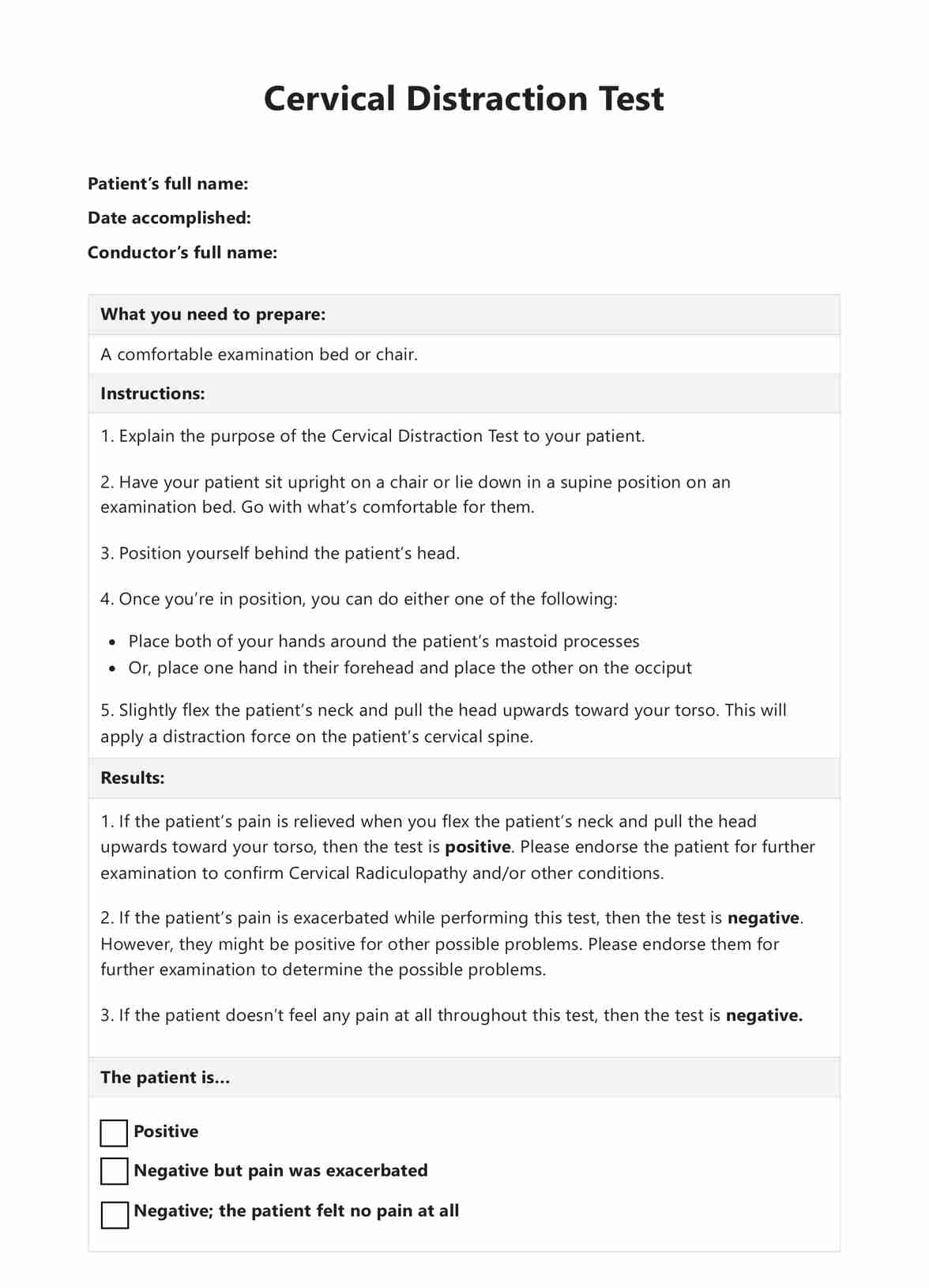It should only take 1 to 5 minutes, if you don’t count other factors like checking the patient’s medical history and determining the results.

Cervical Distraction Test
If your patient complains about pains in their cervical spine area, there might be a chance that they have Cervical Radiculopathy. To gauge this, you can perform the Cervical Distraction Test. Learn more about this examination technique through this guide!
Cervical Distraction Test Template
Commonly asked questions
In a sense, yes. However, whatever pain the patient will feel will be caused by their pre-existing cervical spine issue. If the patient has Cervical Radiculopathy, then this test should relieve the pain for a bit.
Somewhat. That’s why we emphasized that only certain healthcare professionals should conduct the test. You will be pulling the neck and head upward, after all. The professionals we mentioned know how to conduct this test safely. If a non-professional conducts this, they might end up worsening the problem.
EHR and practice management software
Get started for free
*No credit card required
Free
$0/usd
Unlimited clients
Telehealth
1GB of storage
Client portal text
Automated billing and online payments











